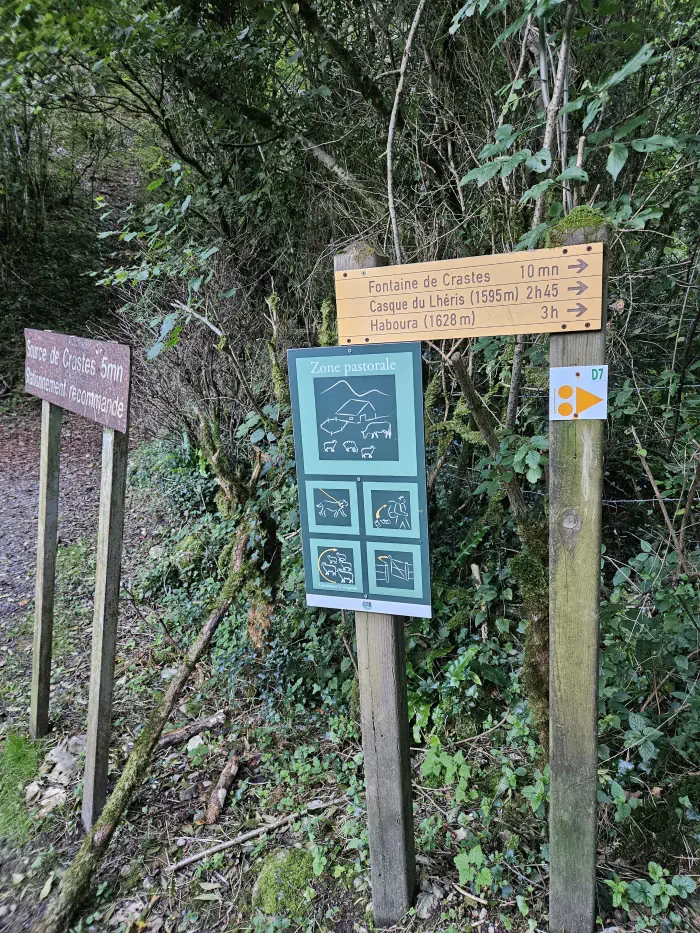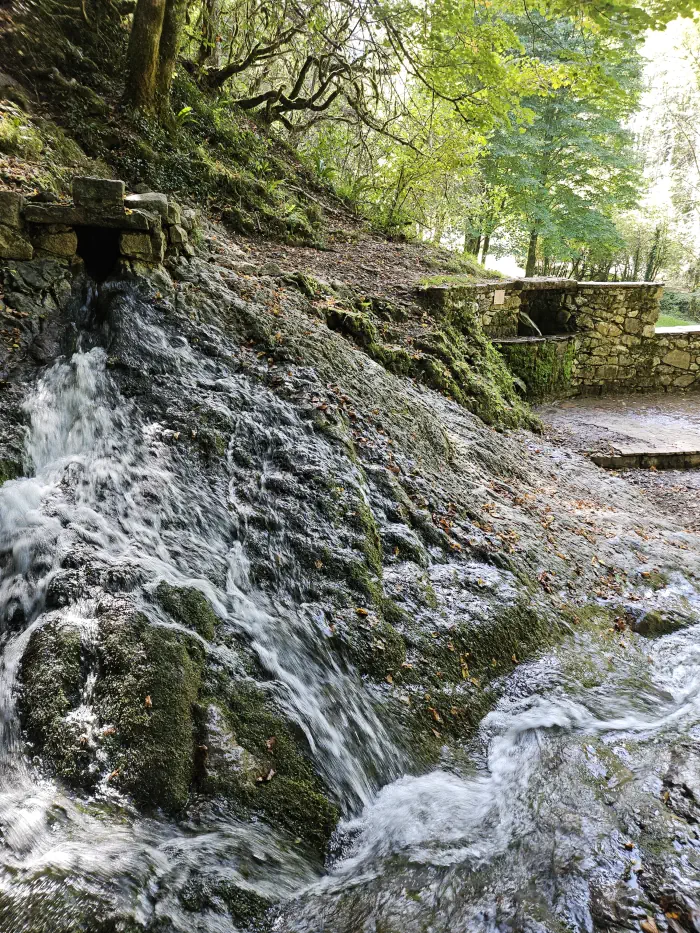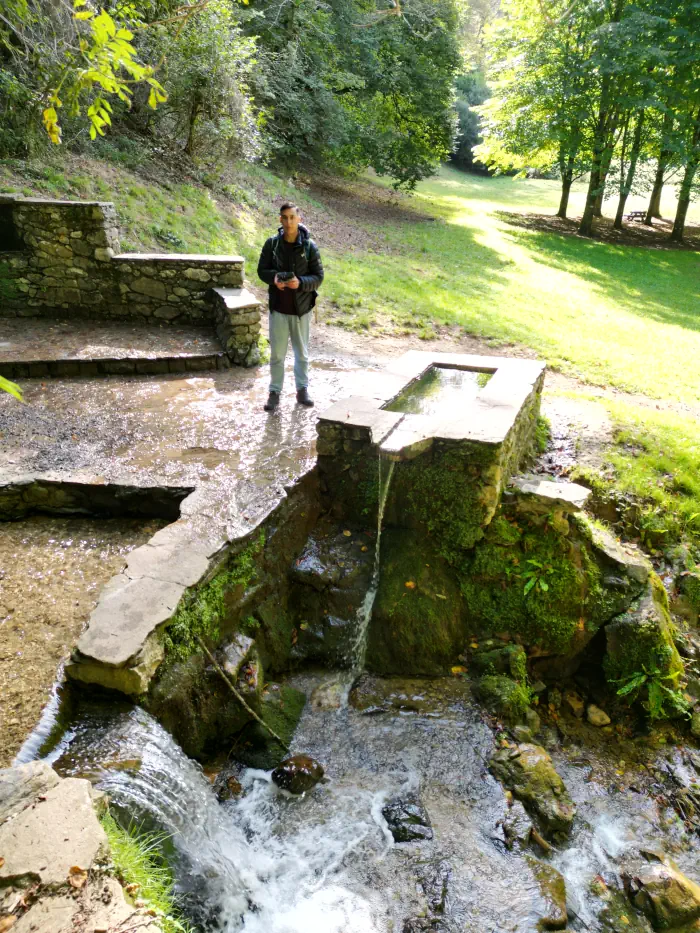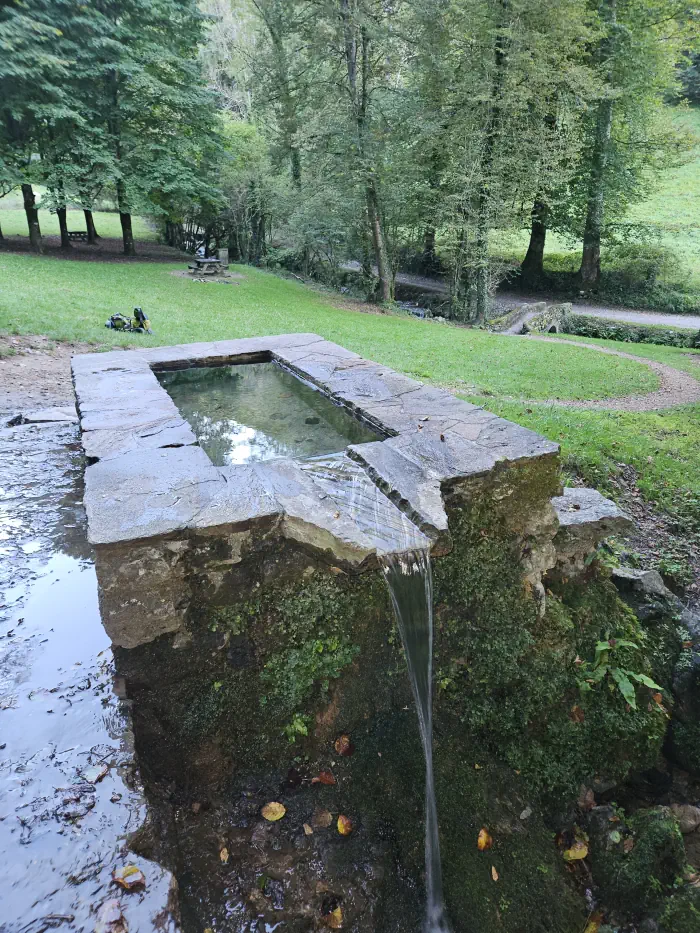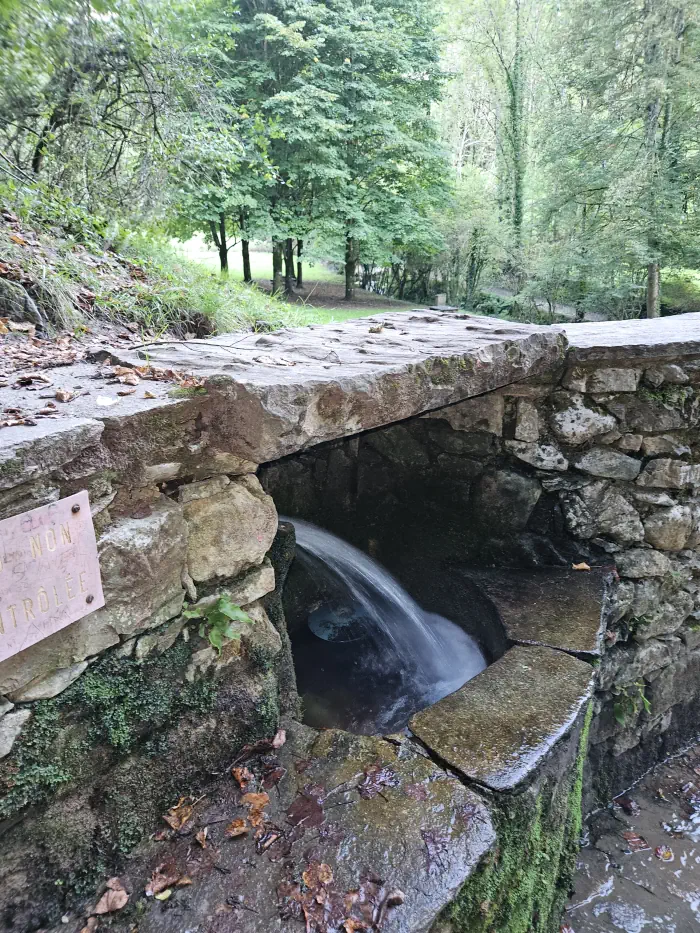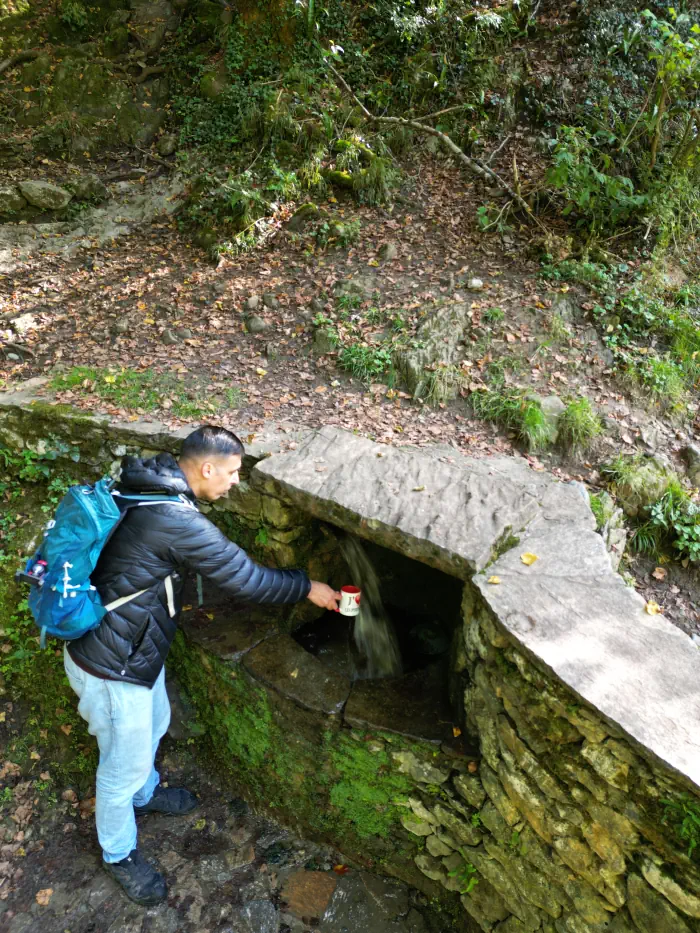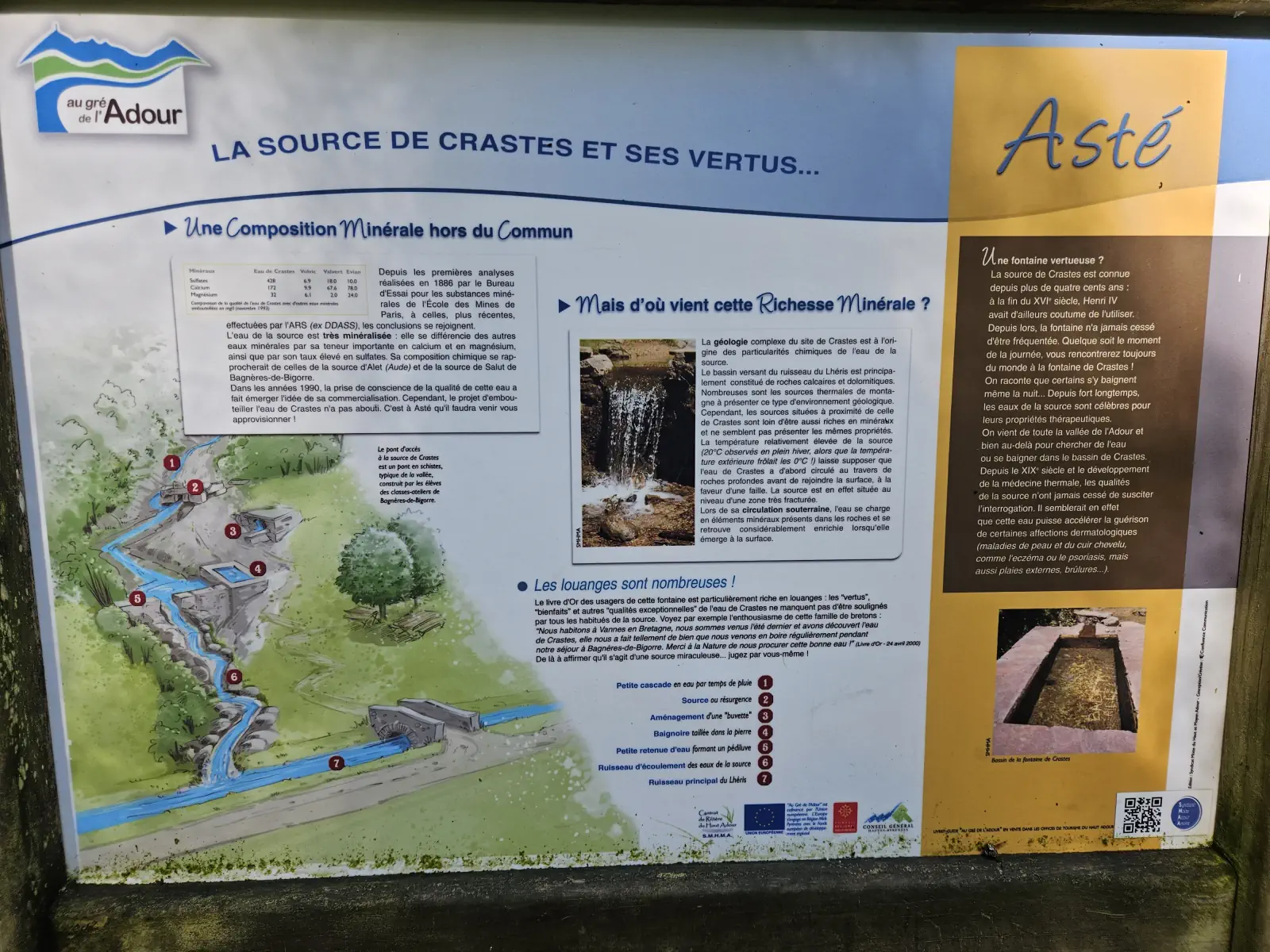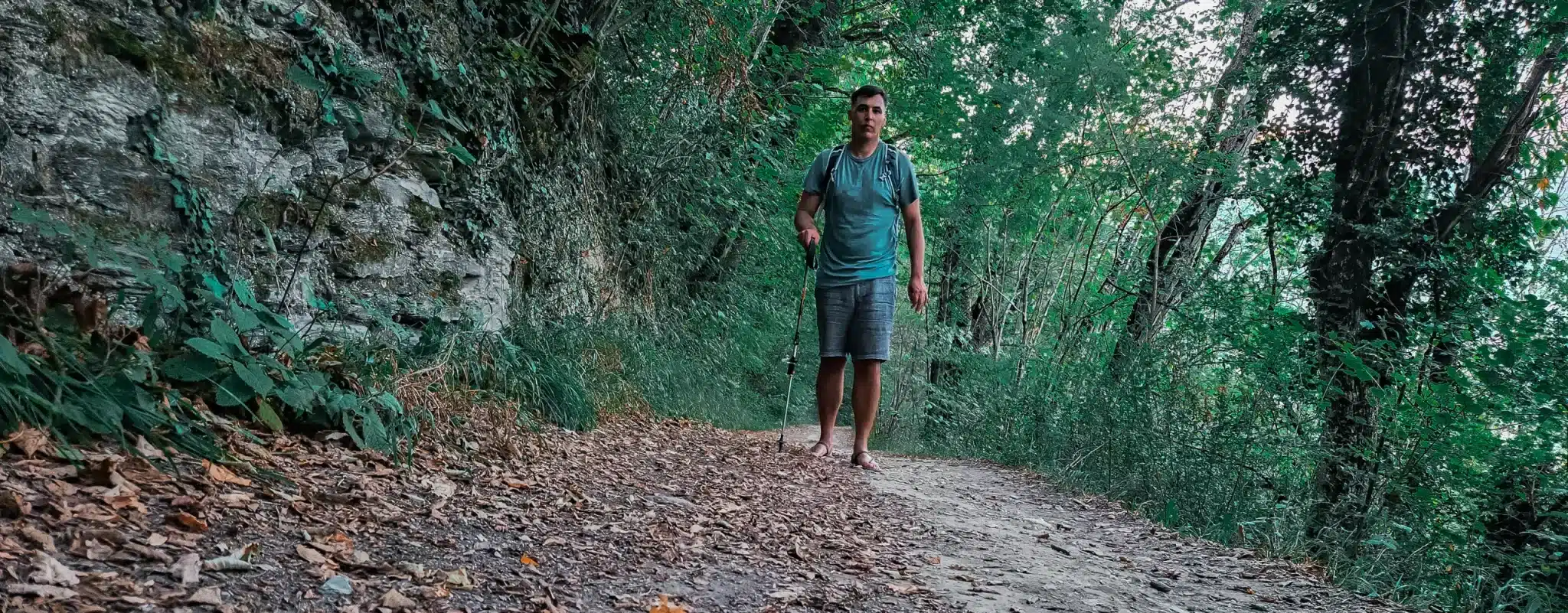La fontaine de Crastes in Asté, French Pyrenees
- Nature Source Chaude
- Published on
- Updated on 25 May 2025
A spring, known as the Crastes spring, rises near the charming village of Asté (Hautes-Pyrénées), which consists of a small number of houses.
Set against the mountain on one side and bordered by the Adour river on the other, the village provides access to a small road leading to the Fontaine de Crastes, set in the heart of a wild valley.
Documents also show that the spring that makes this area so rich today has long been used for its therapeutic virtues.
Table of Contents
The site
The presence of this fountain invites locals and walkers to take a revitalising break. They can quench their thirst while enjoying the therapeutic benefits of the cold thermal water.
For the more adventurous, there is also a pool where the thermal water maintains a temperature of 20 degrees both summer and winter. Bathers flock here in the summer. It’s also a great place for a picnic.
How do I get to the fountain?
When you arrive in the village of Asté, the starting point for the fountain will be clearly indicated. At the end of the village, take the ‘route de la fontaine de Crastes’ for about a kilometre. Once you’ve parked your car in a small car park, the spring is about 500 metres away, near a small shale stone bridge over the Lhéris stream.
Temperature of the spring: 20 degrees.
Above all, the visit is an opportunity to enjoy a beautiful walk (on foot, by bike or on horseback) in a wild and lush environment, in the middle of the woods, with a stop at the Crastes fountain, of course.
From the carriage path, the spring is noticeable for its abundant flow, which might suggest the presence of ordinary fresh water. However, it is actually cold thermal water (classified as mineral water) that has taken advantage of cracks in the earth’s crust to rise to the surface.
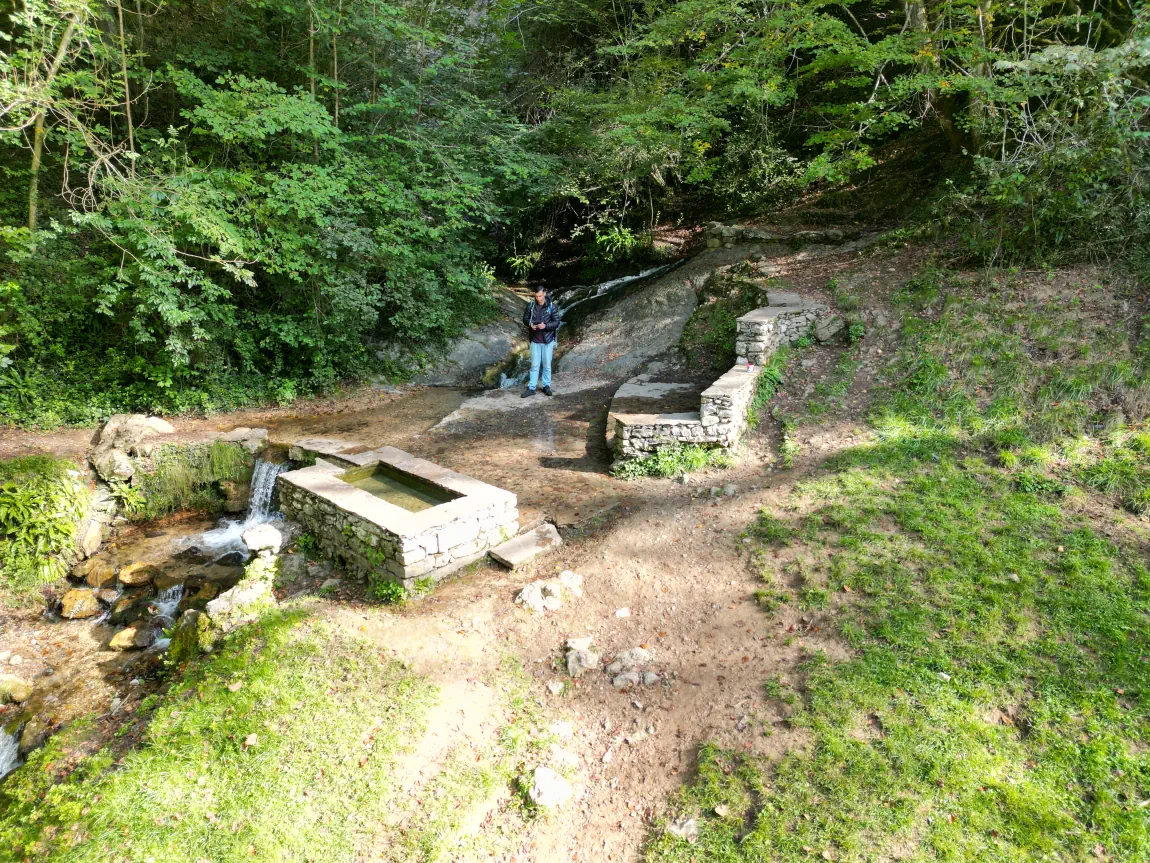
The spring has never been exploited due to its isolation at altitude, and the capture is very basic. The nearest dwelling is over a kilometre away.
The water gushing from the source is clear and remains at a consistent temperature. This creates a waterfall that feeds a small, rock-cut pool used for foot baths. From there, the water flows into a ditch. This stream then joins the Lhéris Stream some twenty metres below.
The spring also feeds a fountain. The water is then piped underground into a small, rectangular stone basin.
The Crastes spring
The stone fountain has an almost completely flat roof. There is a sign indicating that the spring water is unregulated.
So this is where you come to taste the water.
After drinking one glass, I don’t feel any worse. It’s a very pleasant, refreshing drink and it’s guaranteed to be nitrate-free!
However, due to its high magnesium content, drinking this water may cause intestinal problems for those who are not accustomed to it. It is also rich in silica, sulphates, calcium and trace elements. To enjoy all its benefits, it should be consumed on site. So remember to take a glass with you!
Many walkers also come here to fill their water bottles.
According to the information board on the site, these waters have been renowned since at least the time of Henry IV in the late 16^(th) century — over 400 years ago. It was only when the king himself started using the fountain that his people began to believe in its effectiveness. He must certainly have praised its many therapeutic virtues.
Since then, the fountain has become a popular tourist attraction. Much to the delight of walkers and local wildlife, the Crastes spring has remained in its natural state.
The spring water is said to have healing properties, particularly for dermatological conditions such as eczema and psoriasis. It is also said to aid the treatment of wounds, burns and scalp diseases. It is also said to help with gastric disorders, such as ulcers.
Finally, cold water is ideal for drinking and complements the hot water used for soaking perfectly.


